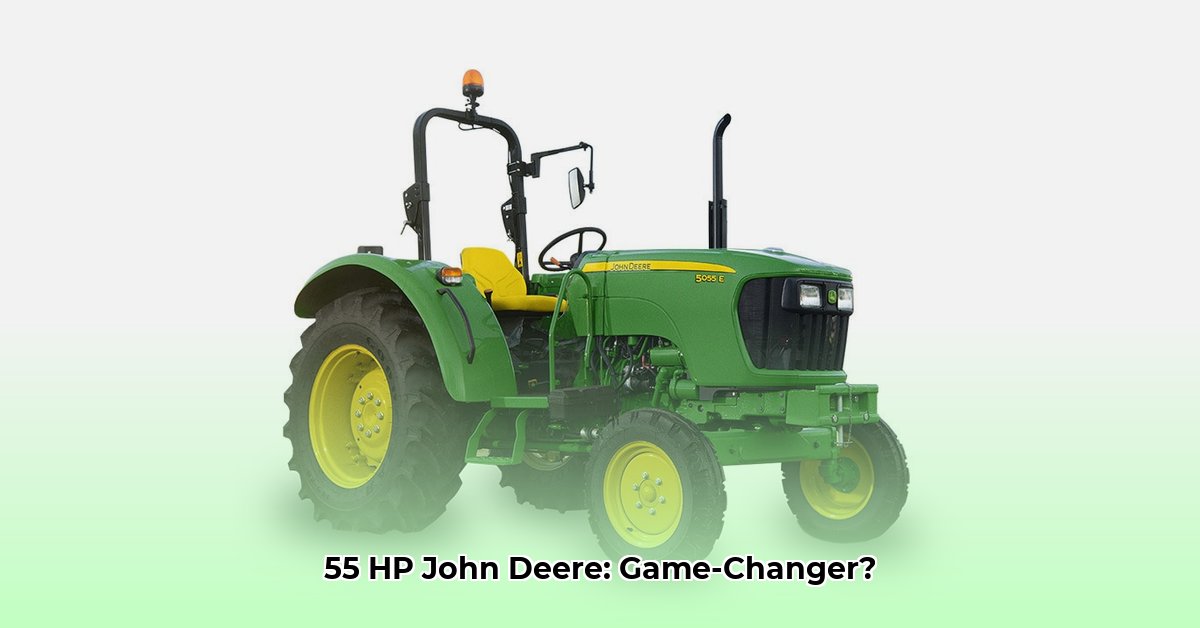
55 hp John Deere Tractor: A Detailed Look at Efficiency and Modern Farming
The John Deere 5060E, a 55 horsepower tractor, represents a significant investment for farmers. This review analyzes its strengths and weaknesses, focusing on ergonomics, technology, and sustainability. Is it the right tractor for your operation? Let's find out. For comparison, check out this John Deere 2032R review.
Operator Comfort: Ergonomics Redefined
Long hours in the field demand comfort. The 5060E's adjustable air suspension seat significantly reduces operator fatigue. The intuitive controls minimize time spent fumbling and maximize time spent farming. This translates to increased efficiency and a healthier workday. But does this comfort translate to all body types and preferences? Further user feedback would provide valuable insight.
Smart Tech for Smarter Farming
Beyond comfort, the 5060E boasts smart technology. The Electronic Quick Raise-Lower (EQRL) system streamlines implement attachment and detachment. This timesaving feature is a significant boost to overall productivity. Bright LED work lights and "Go-Home" lighting enhance visibility and safety, extending working hours. The Final Tier 4-compliant engine reduces downtime, maximizing operational efficiency. However, the extent of its precision agriculture integration requires further investigation. Does it seamlessly interface with advanced GPS systems and variable-rate technology? We need further independent testing on this critical aspect.
Sustainability: A Comprehensive Evaluation Needed
While Deere highlights efficiency features, a comprehensive sustainability assessment is lacking. Independent verification of fuel consumption and greenhouse gas emissions is crucial. Understanding the tractor's full lifecycle environmental impact—from manufacturing to disposal—is essential for environmentally conscious farmers. This includes evaluating the long-term effects of the engine’s "no-regen" system, which, while potentially reducing downtime, might lead to increased emissions and potentially reduced engine longevity.
Weighing the Pros and Cons: A Balanced Assessment
Here's a breakdown of the 5060E's key features:
| Feature Category | Pros | Cons |
|---|---|---|
| Ergonomics | Superior operator comfort via adjustable air suspension seat and intuitive controls. | Individual comfort may vary; needs more user feedback to confirm broad applicability. |
| Technology | Efficient EQRL system, enhanced visibility with LED lighting, reduced downtime with Tier 4 engine. | Precision agriculture integration requires further clarification; independent verification is needed for seamless technology use. |
| Sustainability | Potential for fuel efficiency gains; requires independent verification of fuel consumption and emissions. | Lack of comprehensive, independently verified data on lifecycle environmental impact, including waste management at end-of-life. |
| Overall | Enhanced operator comfort and efficiency through technological advancements; improved workflow. | Requires further research to fully assess long-term sustainability and precision agriculture capabilities. |
Practical Steps for Informed Decision-Making
Investing in a tractor requires careful consideration:
- Needs Assessment: Does the 5060E's feature set align with your unique farming operations?
- Financial Analysis: Budget for purchase price, fuel, maintenance, and repairs, factoring in potential resale value.
- Independent Research: Consult independent reviews and data on fuel efficiency and environmental impact.
- Technology Integration: Ensure seamless compatibility with your current and future precision agriculture needs.
Key Takeaways:
- The John Deere 5060E offers improved ergonomics and key technological advancements.
- Independent verification of fuel efficiency and environmental impact is critical for a complete sustainability assessment.
- Thorough research on precision agriculture integration is needed before purchasing.
In Conclusion:
The John Deere 5060E presents a compelling combination of operator comfort and technological efficiency. However, the lack of comprehensive sustainability data and full clarity on precision agriculture integration requires further investigation. A thorough comparison with competing models is essential before making a final decision. Prioritize independent reviews and real-world user feedback to inform your purchasing decision.